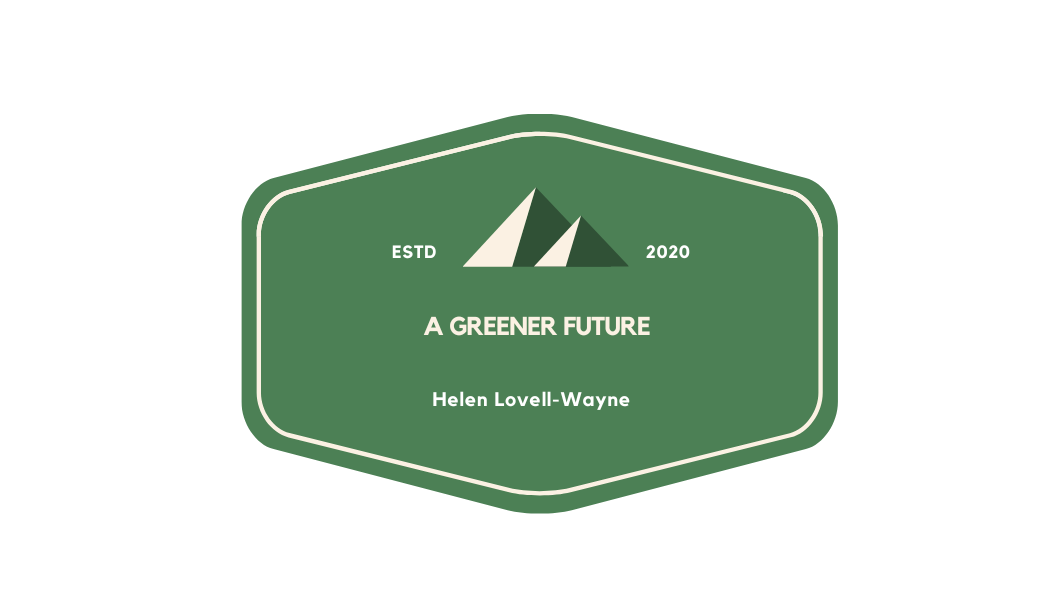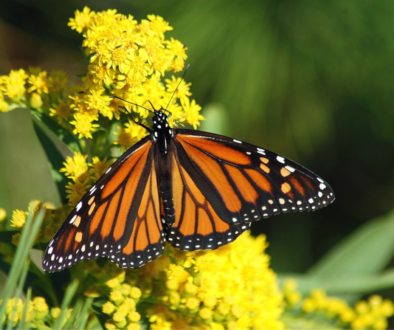A Bluebird On My Shoulder

By Helen Lovell-Wayne
In previous articles I have discussed a few ways the average person can reduce their carbon footprint by buying more sustainable products. This article will concern something anyone can either create on their own or buy to help the environment. What I am about to discuss is simple to do, but the considerations can be complicated. The topic is putting a bluebird box on your property.
Bluebirds are small insectivorous or omnivorous songbirds found in most of North America and some of Central America. They are aptly named since their wings and back are covered with a gorgeous, vivid blue. Their bellies are white with a rust-coloring near the head and extending under the wings. In general people like seeing these birds on their property because they are aesthetically pleasing and eat insects. To attract these birds, people put up bluebird boxes (The Cornell Lab).
🌲 Bluebird Nest Locations 🌳
Bluebirds don’t excavate their own holes; they use holes created by other creatures or nature. Old-growth forests have plenty of old trees with brittle bark that made it easy for animals to create holes. These holes are used primarily for shelter. When the original occupant leaves bluebirds take advantage of the hole. However old growth forests are disappearing, and so are the bluebirds. Another reason for bluebird decline has to do with habitat succession.
Bluebirds do better in habitats that have been thinned due to fire or some other natural occurrence (for more information, read the Eternal Fire). A combination of fire suppression and loss of old-growth forest has led to population declines of bluebirds across the county (Victoria A Saab et al.). Bluebird boxes have a history of having positive effects on bluebird breeding.
🪹 Bluebird Nest Success 🪺
In numerous bluebird studies, it has been shown that birds that use nest boxes are more successful than those that use natural nest cavities. Bluebirds who utilized nest boxes produced bigger clutches, had higher nesting success, and lower predation rates than those breeding in natural cavities. In addition, places with bluebird boxes support four times the population of birds as the surrounding areas. It appears that erecting bluebird boxes has a positive effect on bluebird populations (KC Parcell).
However, as with anything in nature, erecting a bluebird box is far from straightforward. Wrens are smaller than bluebirds. They can fit into the bluebird box hole with ease. If they just went in and left, that would not pose a problem. Instead, wrens stick their beaks into bluebird eggs and kill the unborn chicks. Wrens are detrimental to bluebird nesting success. To combat this problem, some bluebird box owners put up separate wren boxes with smaller holes. This gives the wrens a place to nest, so in theory they will leave the bluebirds alone (W. David and P. Roca) .
🏆 Competition For Bluebird Boxes 🐣
Other cavity nesting birds can compete for the boxes as well. These birds include, but are not limited to, House Sparrows, Tree Swallows, and several species of woodpeckers. Woodpeckers enlarge the hole and make themselves at home. Tree Swallows simply use the boxes for their own clutches of eggs. If the bluebird box owner doesn’t mind other cavity nesting birds, this is not a problem. If all these species were simply benign competition, then putting up the boxes could be just about as aesthetic. However, once again, this is not as simple as it appears (Horn et al 1996).
🐍 Protection Of Bluebird Nests 🦝
House sparrows are an aggressive non-native species that kill bluebirds so they can have access to the nesting cavity. They kill chicks and adult birds with impunity. To stem this problem, some bluebird enthusiasts have come up with creative solutions. They include plugging the hole until the bluebirds are ready to nest, putting bird food in tubes (rather than open feeders), placing wiring around the hole (house sparrows don’t like the swaying motion), and finding ways to spook sparrows away (S. Pavlik, C).
Other concerns with boxes include protecting it from raccoons, other predatory mammals, and snakes. That is one of the biggest causes of nest failure. There are a variety of ways to protect the nest. One of them is putting a metal canister on the pole beneath the nest. This protects the nest from these predators. However, some ingenious predator could probably figure out a way around it (J. Kozma and A.Kroll 2010).
💦Concluding Bluebird House Remarks🪹
Now that the reader has a notion of some of the nuances of protecting bluebirds, there is another element to consider. The problem with bluebird populations is not just the lack of nesting holes. The bigger threat now is pesticides. To truly protect bluebirds, the box owner must not use any pesticides and discourage anyone nearby from using them as well (Read, W et al)
Bluebird boxes can help a species survive. However, to be effective, some considerations need to be made. The future bluebird box owner needs to be willing to put it in an appropriate place, accompanied by safeguards from predators and competitors. If the owner wants to continue to enjoy bluebirds, then they should also stop using pesticides. If their neighbors are close by, they need to ask them to stop using them as well. Otherwise, the box might not be effective.



